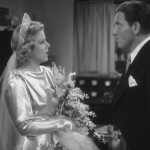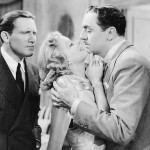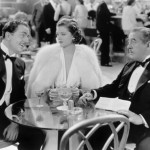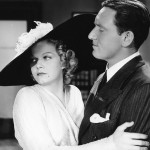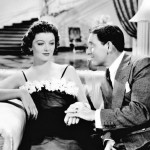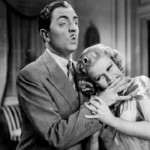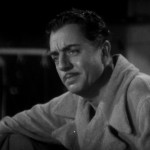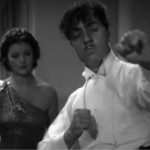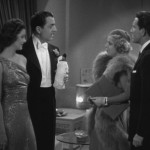
Libeled Lady – 1936
I’ll start this off by just saying that this was a fun movie. It was a well-constructed story, it had good actors, good humor, and it was just plain fun to watch. It was a screwball comedy done in the style of other films like 1931’s Front Page, 1934’s The Thin Man, or even 1940’s The Philadelphia Story. I liked the characters, I liked the quick witted comedy, and I liked the fast and yet cohesive pace.
The movie’s 4 main characters were played by 4 big name actors, Jean Harlow, William Powell, Myrna Loy, and Spencer Tracy. My favorite was William Powell because his acting always has a touch of playfulness to it that is a delight to watch. He seemed very at ease in front of the camera.
Tracy played the character of Warren Haggerty. He is a newspaper man who eats and breaths the business. The trick is that he is engaged to be married to his fiancée, Gladys Benton, played by Harlow. While she is waiting for him in her wedding dress, he is trying to find an excuse to get out of the wedding. As luck would have it, a terrible mistake made at his paper turned out to be just the thing.
The paper printed a story about the wealthy socialite Connie Alllenbury, played by Loy. It said that she was a husband stealer and that she broke up a marriage at a big social event. But the story was untrue, and thus we have our title. Connie ended up suing the paper for $5 million because of the libelous article, a lawsuit that would put the paper out of business. Haggerty’s solution is to find and hire an old friend who happens to be a current enemy, Bill Chandler, played by Powell. Chandler agrees to marry Gladys in a sham wedding, find Connie and become her friend, get himself into a compromising situation with her, and have the scene photographed. That way the libelous accusation would become true and the lawsuit would be dropped. Hijinks ensues.
The feel of the whole film is light-hearted and fun. In fact, I think it might be safe to say the screwball comedy might be the forerunner to the romantic comedy of today. During the course of the deception, Chandler falls in love with Connie and begins to do everything he can to protect her. In the end, all the characters are happily in love and the audience falls in love right along with them. The ending is one of those wonderful feel-good endings.
Powell and Loy already had a proven on-screen chemistry that worked in, amongst other things, the Thin Man series. They were fun to watch, especially in the end when all the lies started to fall away and all the truths started to be revealed. Tracy and Harlow also did a good job together as a different, yet no less believable sort of couple. All 4 of the leads did a great job.
Another actor in the film that was memorable was Walter Connolly, playing the part of Connie’s father, James Allenbury. He is a familiar face, who is always seen playing supporting roles but never the lead.
During my research (otherwise known as Wikipedia) I found that at the time the film was made in 1936, Powell and Harlow were an off-screen couple. Apparently Harlow wanted to play the role of Connie so that she and William would end up together in the end. Unfortunately for her, the studio had always intended that the film be a Powell and Loy vehicle that would boost the box-office sales. But at least they gave Harlow top billing. Harlow only made two more films before her death at age 26.
Incidentally, this nominated film was up against the Best Picture winner The Great Ziegfeld, which also starred William Powell and Myrna Loy. Obviously it was a combination that worked.
It is sad to say that movies like this just aren’t made very much anymore. Today’s humor is usually either juvenile or vulgar, but rarely witty. It is its own brand of humor that can now only be seen in movies from the black and white era. And there was an innocence about it that was inviting and easy. Just like the characters in the movie, the audience ends up with a smile on its collective face.
